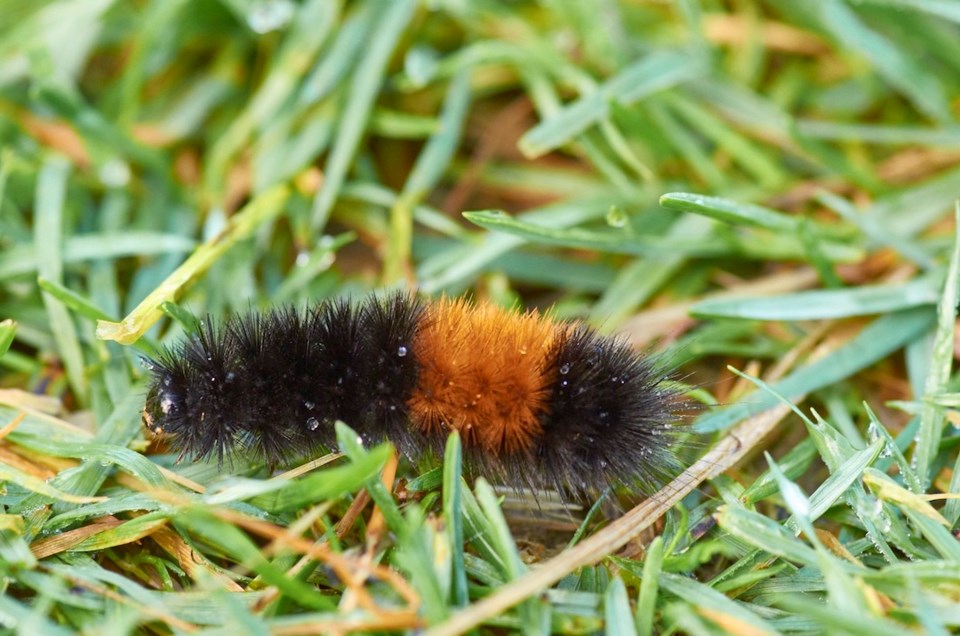October is a month of great change. The weather is getting wetter and cooler, plants and animals are preparing for winter. In my daily walks through the meadow adjacent to the horse ring in Crippen Park, I am seeing the grasses turn from green to brown and the last buttercup and thistle flowers go to seed. Some days I see small flocks of juncos stopping off for a snack of insects and seeds as they make their way south for the winter.
But for me one of the sure signs of autumn is the mass migration of a much smaller creature, the banded woolly bear caterpillar. At this time of year they are a little over two and a half centimetres long and are covered with stiff hairs. Their front and rear sections are black with a rusty-red mid section.
Each fall, these full-grown caterpillars stop eating the grasses and herbs in the meadow, climb down to the ground and begin a determined trek to find cozy hibernation sites.
If you could shrink down to their size and follow one, you may have to travel several hundred metres to a dry patch of soil covered by dead leaves and sticks to watch it curl up to sleep, until the coming of spring.
Even though the woolly bears seek out insulated hibernation sites, these cold-blooded creatures are often exposed to temperatures well below freezing. Their tiny bodies often freeze solid. First their hearts stop, then their digestive tract will freeze, followed by their blood, and then the remainder of their bodies freeze. This would kill most creatures, because ice crystals would rip unrepairable holes in their cells. The woolly bears secret is that its tissues are full of cryoprotectant chemicals that protect cell structures from ice damage.
If we get a sunny spell in midwinter when the woolly bears’ hibernation places warm above freezing, some will awaken and go out for a short walkabout before finding another cozy hibernation place.
When spring finally comes, the woolly bears awaken and again get on the move. This time they are looking for a safe spot among the grass stems to weave a cocoon where they will transform into a pupa.
After two or three weeks, the pupa splits its skin and a pretty pale Isabella moth emerges.
After mating with a male, the female Isabella moth will lay hundreds of eggs on the leaves of a wide variety of plants in the meadow and surrounding forest.
When they hatch, a new generation of woolly bear caterpillars will begin.
Note: scientists have not found woolly bear caterpillars to be pests of food crops or ornamental plants.


-2.jpg;w=120;h=80;mode=crop)
